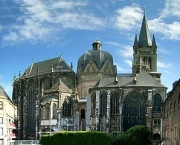Cycle Tour All around Germany - Part Aachen - Dresden
Planned tour
Actions
![]()
Please wait - map data are loading
Added on 05 Jan 2015,
last edited by biroto-Redaktion on 06 Jan 2015
Actions
Cycle route metrics
planned
ridden
Total distance in km
2.355
0
Cumulative elevation gain in m
32.667
0
Avg. slope uphill in %
1,39
-
Cumulative elevation loss in m
32.742
0
Information about rights to the gps-track data | |
|---|---|
Rights owner | biroto.eu contributors |
Rights characteristic / license | by-sa: CREATIVE COMMONS Attribution-ShareAlike |
Link to the description of the license | |
GPX file taken from | |
GPX file uploaded | by biroto-Redaktion on 05 Jan 2015
|
Track points in total
33.156
0
Track points per km (avg)
14
0
Start/endpoint
Start location
Aachen, North Rhine-Westphalia, DE (188 m NHN)
End location
Dresden, Saxony, DE (113 m NHN)
Connecting cycle path
Fortsetzung der Tour:
Beds4Cyclists, worth visiting and infrastructure
Name and address
Latitude / Longitude
Phone
Fax
Mobile
Type of accommodation
Rating for cyclists
Route km
Dist. to route
Elevation
0 km
2,1 km
227 m
0 km
0,2 km
187 m
0 km
0,8 km
177 m
0 km
0,8 km
181 m
Information about copyright | |
|---|---|
Rights owner | |
Rights characteristic / license | by-sa: CREATIVE COMMONS Attribution-ShareAlike |
Link to the description of the license | |
Image taken over from | |
Image has been uploaded | by biroto-Redaktion on 06 Apr 2012
|
Aachen Cathedral, frequently referred to as the "Imperial Cathedral" (in German: Kaiserdom), is a Roman Catholic church in Aachen , Germany. The church is the oldest cathedral in northern Europe and was known as the "Royal Church of St. Mary at Aachen" during the Middle Ages. For 600 years, from 936 to 1531, the Aachen chapel was the church of coronation for 30 German kings and 12 queens. The church is the episcopal seat of the Diocese of Aachen.
Information about copyright | |
|---|---|
Rights characteristic / license | by-sa: CREATIVE COMMONS Attribution-ShareAlike |
Link to the description of the license | |
Input taken over from: |
Wikipedia contributors, 'Aachen Cathedral', Wikipedia, The Free Encyclopedia, 4 April 2012, 13:50 UTC, http://en.wikipedia.org/w/index.php?title=Aachen_Cathedral&oldid=485517282 [accessed 6 April 2012] |
taken over / edited on | 06 Apr 2012
|
taken over / edited by |
|
Hours of opening
April - Dezember:
täglich 07.00 bis 19.00 Uhr
Januar - März:
täglich 07.00 bis 18.00 Uhr
Wichtig!
Eine touristische Besichtigung des Dominnenraumes ist während der Gottesdienste nicht möglich, d.h. Besichtigungen werktags ab 11,00 Uhr, samstags und sonntags ab 12,30 Uhr. Dies gilt auch für außerplanmäßige Sondergottesdienste (Vorbereitung) und Sonderkonzerte.
0 km
0,2 km
181 m
![]()

